Find Help
More Items From Ergsy search
-

What causes obstructive sleep apnea?
Relevance: 100%
-

What is sleep apnea?
Relevance: 81%
-

What is sleep apnoea?
Relevance: 80%
-

What are the main types of sleep apnea?
Relevance: 79%
-

How common is sleep apnea?
Relevance: 78%
-
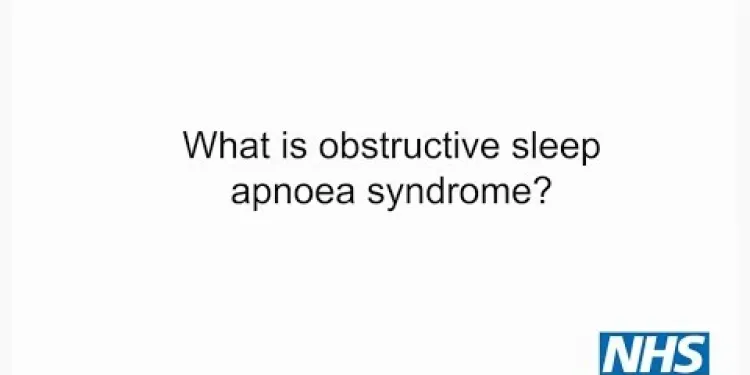
Introduction to obstructive sleep apnoea
Relevance: 78%
-

What is complex sleep apnea syndrome?
Relevance: 76%
-
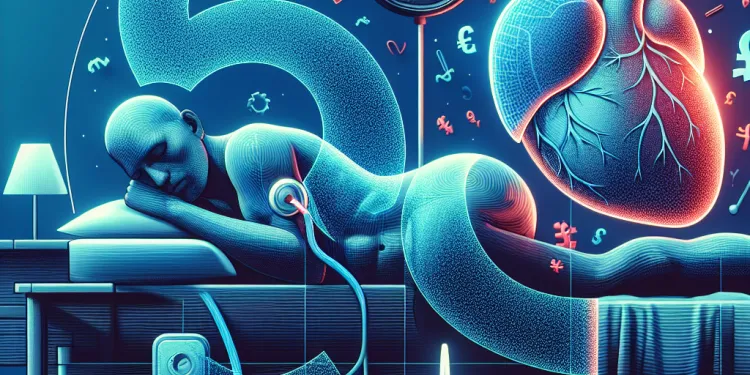
What is complex sleep apnea syndrome?
Relevance: 75%
-

Can alcohol worsen sleep apnea?
Relevance: 73%
-

Does sleep apnea occur only in adults?
Relevance: 73%
-
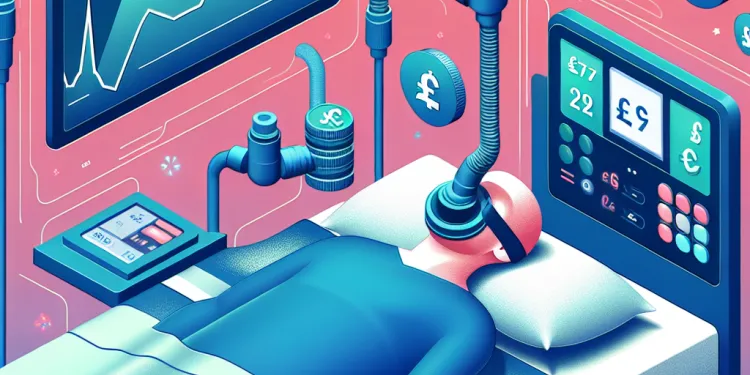
Is CPAP the only treatment for sleep apnea?
Relevance: 72%
-

Why is sleep apnea dangerous?
Relevance: 72%
-
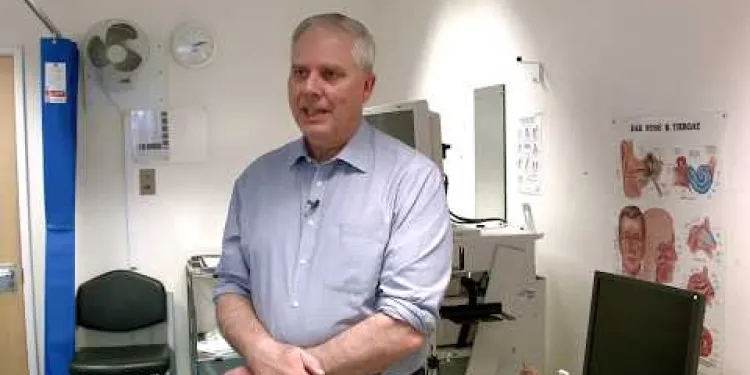
Evidence-Based Interventions: snoring surgery in the absence of Obstructive Sleep Apnoea (OSA)
Relevance: 72%
-

Can sleep apnea be cured?
Relevance: 71%
-
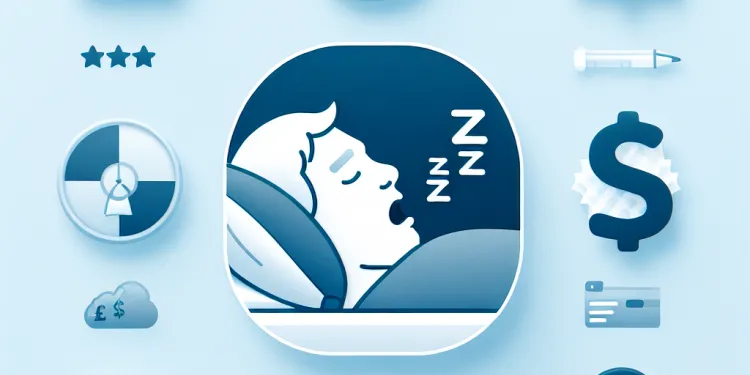
Is snoring always a sign of sleep apnea?
Relevance: 71%
-

Can weight loss improve sleep apnea?
Relevance: 70%
-

What treatments are available for sleep apnea?
Relevance: 70%
-

What are risk factors for developing sleep apnea?
Relevance: 68%
-

How is sleep apnea diagnosed?
Relevance: 68%
-
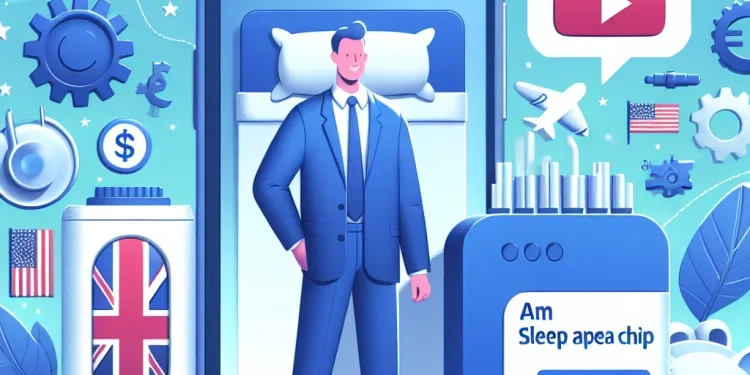
Am I eligible to try the new sleep apnea chip?
Relevance: 67%
-

Can children have sleep apnea?
Relevance: 65%
-

What lifestyle changes can help manage sleep apnea?
Relevance: 65%
-

What are common symptoms of sleep apnea?
Relevance: 65%
-

What should I do if I suspect I have sleep apnea?
Relevance: 62%
-

How does the new Sleep Apnea Chip work?
Relevance: 60%
-

How does central sleep apnea differ from obstructive sleep apnea?
Relevance: 45%
-
What is sleep apnoea?
Relevance: 34%
-

What are the risks associated with baby sleep pillows?
Relevance: 32%
-
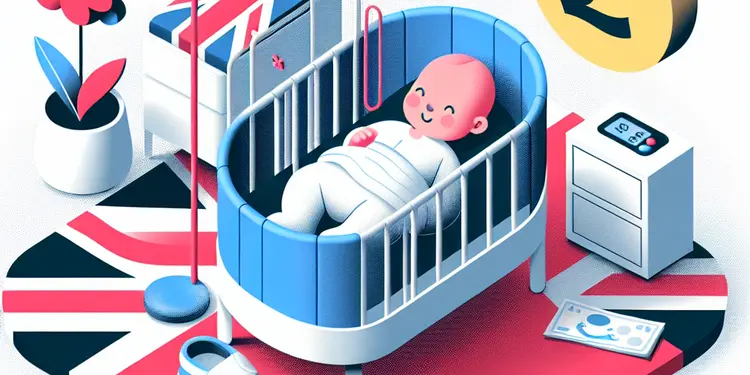
What is the safest sleep environment for an infant?
Relevance: 31%
-

Why are baby sleep pillows not safe for infants?
Relevance: 30%
-

Are baby sleep pillows safe?
Relevance: 30%
-
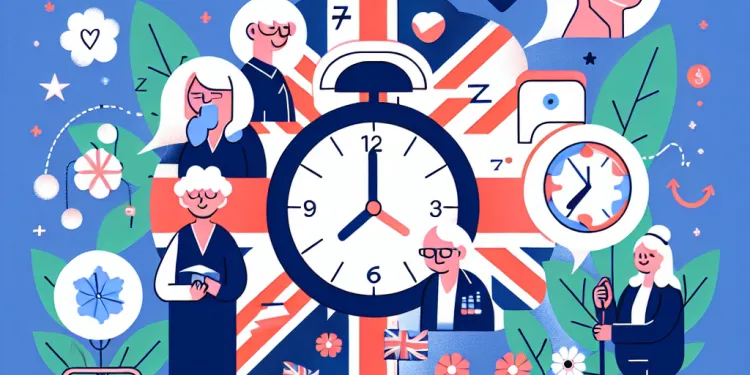
The Importance of Sleep for All Ages
Relevance: 29%
-

Are there any benefits to using baby sleep pillows?
Relevance: 28%
-

Do crib wedges pose the same risks as baby sleep pillows?
Relevance: 27%
-

What do pediatricians recommend about baby sleep pillows?
Relevance: 27%
-
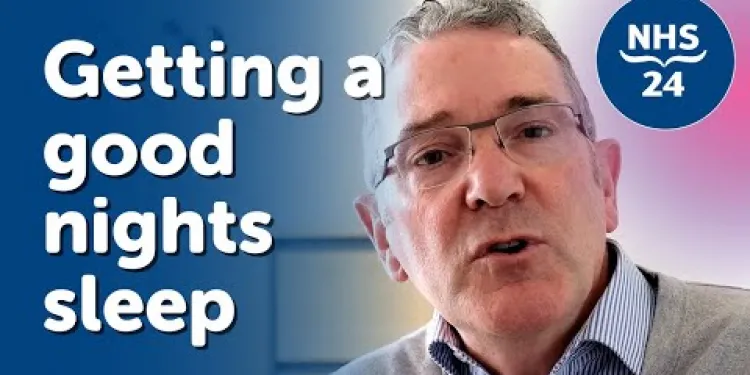
Top Tips to Help You Get a Good Nights Sleep
Relevance: 26%
-

Does screen time affect both sleep onset and sleep maintenance?
Relevance: 26%
-
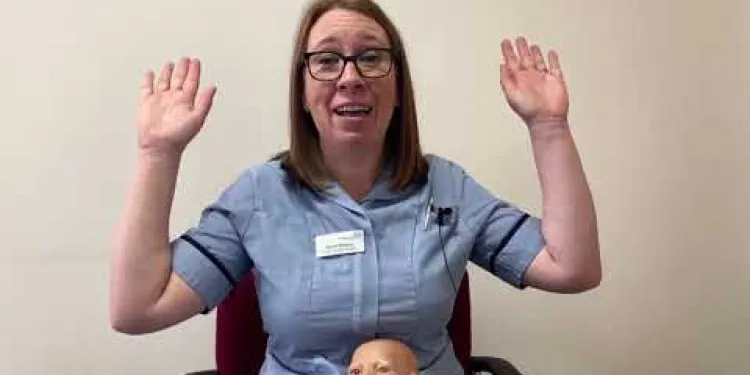
Safe sleeping and reducing the risk of Sudden Infant Death Syndrome (SIDS)
Relevance: 25%
-
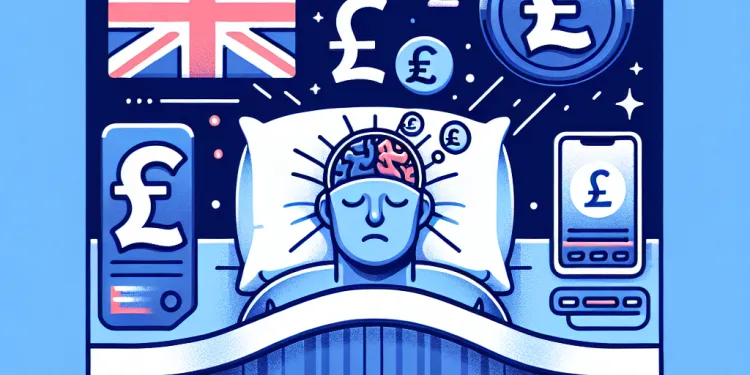
Is it safe to sleep after a concussion?
Relevance: 25%
-

Is it safe to sleep after a concussion?
Relevance: 25%
Introduction to Obstructive Sleep Apnoea
What is Obstructive Sleep Apnoea?
Obstructive sleep apnoea (OSA) is a common sleep disorder characterised by repetitive pauses in breathing during sleep. These pauses, known as apnoeas, occur because the muscles in the throat relax and block the airway. This disruption in breathing can significantly affect sleep quality and overall health.
Common Symptoms of Obstructive Sleep Apnoea
Some of the hallmark symptoms of OSA include loud snoring, choking or gasping during sleep, excessive daytime sleepiness, and morning headaches. Other symptoms may include difficulty concentrating, mood changes, and a dry mouth or sore throat upon waking.
Risk Factors for Obstructive Sleep Apnoea
Several factors can increase the risk of developing OSA. These include being overweight, having a large neck circumference, being middle-aged or older, and having a family history of the condition. Lifestyle factors such as smoking and alcohol use can also contribute to the onset of OSA.
Diagnosis and Treatment
If you suspect you have OSA, it is important to consult with a healthcare provider. Diagnosis often involves a sleep study, either conducted at home or in a sleep clinic, to monitor your breathing patterns during sleep. Treatment options vary depending on the severity of the condition and may include lifestyle changes, continuous positive airway pressure (CPAP) therapy, and in some cases, surgery.
Living with Obstructive Sleep Apnoea in the UK
The NHS provides extensive resources and support for individuals with OSA. It is essential to adhere to treatment plans and regularly consult with healthcare providers to manage the condition effectively. Joining support groups and educating oneself about OSA can also be beneficial for those affected by the disorder.
Introduction to Obstructive Sleep Apnoea
What is Obstructive Sleep Apnoea?
Obstructive sleep apnoea (OSA) is a sleep problem. It happens when your breathing stops and starts while you sleep. This happens because your throat muscles relax too much and block your airway. This makes sleeping hard and can be bad for your health.
Common Symptoms of Obstructive Sleep Apnoea
If you have OSA, you might snore loudly. You might also choke or gasp in your sleep. In the daytime, you could feel very sleepy and have headaches in the morning. You might find it hard to concentrate, feel moody, or wake up with a dry mouth or sore throat.
Risk Factors for Obstructive Sleep Apnoea
Some things make you more likely to have OSA. Being overweight, having a big neck, and being older can make OSA more likely. If someone in your family has OSA, you might have it too. Smoking and drinking alcohol also increase your chances.
Diagnosis and Treatment
If you think you have OSA, talk to a doctor. They can do a sleep study to check your breathing while you sleep. This can be done at home or in a sleep clinic. Treatment can include changing your habits, using a CPAP machine, or sometimes having surgery.
Living with Obstructive Sleep Apnoea in the UK
The NHS can help people with OSA. It is important to follow your treatment plan and visit the doctor regularly. Joining a support group and learning about OSA can also help you manage it better.
Frequently Asked Questions
Here are some tips to help you:
Read slowly: Take your time with each word. It's okay to go slow.
Break it down: Split big sentences into smaller parts. This makes them easier to understand.
Use your finger: Point to each word as you read. This helps you keep your place.
Ask for help: If something is hard, ask someone to explain it.
Use tools: Try using audiobooks or reading apps. They can read the words to you.
Remember, it's okay to read in a way that works best for you!
How can I tell if a website is safe to use?
Here is how you can check if a website is safe:
- Look for a padlock symbol in the address bar. This means the website is secure.
- Check if the web address starts with "https://" instead of "http://". The "s" means it is safe.
- Read reviews about the website online. See if other people say it is good.
- Ask a grown-up or someone you trust to help you decide.
- Use tools that protect you on the internet, like antivirus software.
- If something feels wrong, do not enter any information.
If you find it hard to read, you can use tools that read the text out loud for you.
Lorem ipsum dolor sit amet, consectetur adipiscing elit. Integer nec odio. Praesent libero. Sed cursus ante dapibus diam. Sed nisi. Nulla quis sem at nibh elementum imperdiet.
1. Use simple words when you read. Try reading slowly. This helps you understand.
2. When you read hard words, try using a ruler under the sentences. This can help you follow along.
3. Make sure you are in a quiet place. It is easier to focus without noise.
If you find reading hard, you can ask someone to read with you. Or, you can listen to books out loud.
Remember, practice helps! The more you read, the better you get.
How to Make the Question Easy to Understand
Let's make this question simple.
Read this step by step:
- First, read the whole sentence slowly.
- Look at one word at a time.
- If you see a hard word, you can use a dictionary to help you.
- Ask someone to read with you if you need help.
- Point to the words as you read them.
- It is okay to read the question many times.
When you understand, try to answer in your own words.
Good luck!
Reading is fun and helps us learn. Here are some ways to make reading easier:
- Take your time. Go slowly and don't rush.
- Point at words with your finger to keep track.
- Ask an adult for help if a word is hard.
- Look at pictures. They can help you understand the story.
Remember, you can get better with practice! Keep trying, and don't give up. You're doing great!
How many apples do you have if you start with 10 apples and give away 3?
You can use your fingers to count.
First, start with 10 fingers up.
Then, put 3 fingers down.
How many fingers are still up?
That's how many apples you have left!
This is a simple guide to help you understand what was said.
Title: How to Make a Sandwich
Step 1: Get two slices of bread.
Step 2: Put butter or margarine on one side of each slice.
Step 3: Add your favorite filling. This can be cheese, ham, or a spread like peanut butter or jam.
Step 4: Put the slices of bread together, with the butter sides facing in.
Step 5: Cut the sandwich into halves or quarters if you like.
Tools to Help:
- Use pictures to see each step.
- Listen to someone read it out loud.
- Ask someone to help you.
This guide helps you make a sandwich, step by step!
How Can We Make Our Streets Safer?
Our streets should be safe for everyone. Here are some ways to make them safer:
- Make sure there are lots of lights so people can see well at night.
- Add more signs to show where it is safe to cross the street.
- Put in more sidewalks so people have a safe place to walk.
- Have more spaces for bikes so cars and bikes can share the road safely.
- Ask drivers to slow down in busy areas.
These changes can help keep everyone safe and happy on our streets.
If reading is hard for you, try asking someone to read with you.
Here is a question for you.
What is 2 + 2?
Don't worry if you find it tricky. You can use your fingers or ask someone to help you.
You can also draw pictures or use blocks to help you understand.
Take your time!
I'm here to help! Let's make this text easy to understand. When you see a title, it means the next part will tell you about it. If something is hard to read, try using a ruler or your finger to follow the words as you go along. You can ask someone to read with you if you need help. Reading out loud can also make things clearer.
How to Submit Your Assignment
Do you need help turning in your homework?
Follow these simple steps:
- Check your work. Make sure it is complete.
- Log in to the school website.
- Find the place to submit homework.
- Click the "Submit" button. Upload your work.
- Wait for a message that says "Uploaded."
If you need help:
- Ask a teacher or a friend.
- Use a computer with a screen reader to help.
- Watch a video guide on how to submit work.
Good luck with your homework!
When you read something, it can be hard to understand. Here are some tips to make it easier:
1. Break it down: Read one sentence at a time. Think about what it means before you go to the next sentence.
2. Use a pencil: You can use a pencil or pen to point at the words as you read. This can help you keep your place.
3. Read out loud: Say the words out loud when you read. Hearing the words might help you understand them better.
4. Ask for help: If you don't understand something, ask someone to explain it to you.
5. Use a dictionary: A dictionary can help you learn what hard words mean. You can ask someone to help you with this.
6. Take your time: It's okay to read slowly. You don't need to hurry. Go at your own pace.
7. Use technology: There are apps that can read text out loud for you. This can help you listen and read at the same time.
Reading is like a puzzle. With time and practice, you can get better at it!
Question
What is the main idea of the story?
Think about what the story is mostly about. Try to remember the main events or messages. You can use pictures or drawings to help you understand the story better. You can also ask someone to read it with you and talk about it together.
Learning can be easier with these tips:
Break Tasks into Small Steps
Don't try to do everything at once. Break big jobs into small, easy tasks.
Use Pictures and Colors
Draw pictures and use colors to help remember things. This makes learning fun!
Take Breaks
Work hard, then take a rest. Taking short breaks helps your brain relax.
Use Checklists
Make a list of things you need to do. Checking them off feels good!
Read Out Loud
When reading, say the words out loud. This helps you understand better.
Ask for Help
If you're stuck, ask someone to help. It's okay to need help!
Remember, everyone learns at their own pace. Keep trying, and don't give up!
Use Tools
Try tools like audiobooks or reading apps to help. They can make learning easier.
Keep practicing, and you will get better!
How can we help you with our services today?
We want to know how we can help you. What do you need from us?
Here are some tools to help you:
- Ask a Helper: You can ask someone to read it out loud for you.
- Highlight: Use a highlighter to mark words you know well.
- Pictures: Look for pictures or icons that help explain the words.
- Dictionary: Have a simple dictionary nearby to look up words.
We are here to help you!
Hello! This text will be easier to read.
How to Cook Pasta
Making pasta is easy. Follow these steps to make yummy pasta. You will need water, salt, and pasta.
Step 1: Boil Water
Fill a big pot with water. Put it on the stove. Turn the stove on high heat. Wait for the water to boil. Boiling water has bubbles.
Step 2: Add Salt
Add a little salt to the boiling water. Salt makes the pasta taste better.
Step 3: Add Pasta
Put the pasta in the boiling water. Stir it with a spoon. This helps the pasta not stick together.
Step 4: Cook Pasta
Read the pasta box. It will tell you how long to cook the pasta. Set a timer to help you remember.
Step 5: Taste the Pasta
Before the timer rings, taste a little pasta. If it feels soft, it is ready.
Step 6: Drain the Water
Pour the pasta and water into a strainer. The water will go out, and the pasta will stay inside.
Step 7: Relax and Eat
Put the pasta on a plate. You can add sauce or cheese if you like. Now, enjoy the pasta.
If you find reading hard, use tools that read text aloud. This can help you understand better.
Can you tell me which of these days is your favorite and why? Is it Monday, Tuesday, Wednesday, Thursday, Friday, Saturday, or Sunday?
Tip: You can use a calendar to help you choose your favorite day!
How to Stay Healthy
Staying healthy is very important. Here are some easy tips to help you take care of your body:
Eat Good Food
Try to eat lots of fruits and veggies. They have vitamins to keep you strong. It's good to drink lots of water, too.
Move Your Body
Exercise is fun! You can walk, run, or dance. Moving helps you feel good and stay fit.
Sleep Well
Getting enough sleep is important. Try to go to bed at the same time each night. Your body needs rest to stay healthy.
Wash Your Hands
Before you eat or after you use the bathroom, washing your hands keeps germs away.
Feel Happy
Talk to friends and family when you feel sad. Doing things you love makes you happy.
These tips will help you stay healthy and happy!
Tools to Help You
- Use a food calendar to track your meals.
- Set a reminder to drink water.
- Try a fun exercise video.
- Listen to calm music before sleeping.
- Use a timer when washing hands to wash long enough.
Your Feelings
How do you feel today? Are you happy, sad, or something else?
If you find it hard to say how you feel, you can try:
- Using a feelings chart with faces and words.
- Talking to someone you trust about your feelings.
- Drawing a picture of how you feel.
Think of a cat. Cats are furry and have tails. They like to play with string. Sometimes, cats make a sound called "meow."
To read better, try using a ruler or your finger to help follow the words. Take your time; reading slowly is okay.
Let me know if you have a different text, and I'll be happy to help translate that for you!How to Read this Document
This guide will help you understand how to read and answer a question.
1. Read the question slowly.
2. Look at each word and try to understand it.
3. If a word is hard, ask someone to explain it.
4. Use a ruler or your finger to keep your place while reading.
5. Talk about what you read with someone. This helps you remember.
6. Take breaks if you need to rest.
These steps will make reading easier.
How to Make a Grocery List
Do you need help planning your shopping list? Follow these easy steps:
- Think about meals: What will you eat for breakfast, lunch, and dinner?
- Check your kitchen: Look in your fridge and cupboards. What do you need?
- Write everything down: Make a list of the food and drinks you need to buy.
You can use an app or ask someone to help you. Happy shopping!
Hello!
This is a simple guide to help you understand a bit better.
What Are We Talking About?
We are talking about how to make reading and learning easier.
Simple Tips to Help You Read
- Read slowly. It’s okay to take your time.
- Point to the words with your finger if it helps.
- Ask someone to read with you.
- Use a ruler under the line you are reading.
- Take breaks if you get tired.
Helpful Tools
- Audio Books: Listen to stories as someone reads to you.
- Reading Apps: Try apps that read text out loud.
- Colored Overlays: Use colored sheets to cover a page and make it easier to read.
Remember, reading is like a puzzle. Each time you read, you get better and faster!
Happy reading!
Can you tell me what your favorite animal is and why you like it?
Do you have a favorite animal?
Can you tell me why you like it?
Think about what makes you happy about this animal.
You can use pictures to help you explain.
If you need help, ask a friend or use a talking tool on your device to share your answer.
Here is the question in simpler words:
If you want to know more about something, ask a question! Think about what you really want to find out.
Here are some tips to help you:
- Use simple words.
- Write short sentences.
- Ask one question at a time.
You can also try these tools:
- Use a computer or tablet to type your question.
- Ask someone to help you write your question.
This text will help people who find reading hard. It uses simple words and shorter sentences. Let's make sure it's easy for an 8-year-old to understand.
How to Write Easy
Writing easy means using simple words. Try not to use long or hard words. This helps everyone understand what you mean.
Here are some tips to write easy:
- Use short words. Instead of "purchase," say "buy."
- Keep sentences short. One idea per sentence is best.
- Use pictures if you can. Pictures can help people understand better.
- Break big ideas down. Explain them bit by bit.
Helpful Tools
There are some tools that can help:
- Picture books: They use pictures to show what words mean.
- Audio books: Listening to stories can help understand better.
- Read with an adult: Ask an adult to help if you get stuck.
Using these tips will make it easier for everyone to enjoy reading.
Useful Links
- Ergsy carfully checks the information in the videos we provide here.
- Videos shown by Youtube after a video has completed, have NOT been reviewed by ERGSY.
- To view, click the arrow in centre of video.
- Most of the videos you find here will have subtitles and/or closed captions available.
- You may need to turn these on, and choose your preferred language.
- Go to the video you'd like to watch.
- If closed captions (CC) are available, settings will be visible on the bottom right of the video player.
- To turn on Captions, click settings .
- To turn off Captions, click settings again.
More Items From Ergsy search
-

What causes obstructive sleep apnea?
Relevance: 100%
-

What is sleep apnea?
Relevance: 81%
-

What is sleep apnoea?
Relevance: 80%
-

What are the main types of sleep apnea?
Relevance: 79%
-

How common is sleep apnea?
Relevance: 78%
-

Introduction to obstructive sleep apnoea
Relevance: 78%
-

What is complex sleep apnea syndrome?
Relevance: 76%
-

What is complex sleep apnea syndrome?
Relevance: 75%
-

Can alcohol worsen sleep apnea?
Relevance: 73%
-

Does sleep apnea occur only in adults?
Relevance: 73%
-

Is CPAP the only treatment for sleep apnea?
Relevance: 72%
-

Why is sleep apnea dangerous?
Relevance: 72%
-

Evidence-Based Interventions: snoring surgery in the absence of Obstructive Sleep Apnoea (OSA)
Relevance: 72%
-

Can sleep apnea be cured?
Relevance: 71%
-

Is snoring always a sign of sleep apnea?
Relevance: 71%
-

Can weight loss improve sleep apnea?
Relevance: 70%
-

What treatments are available for sleep apnea?
Relevance: 70%
-

What are risk factors for developing sleep apnea?
Relevance: 68%
-

How is sleep apnea diagnosed?
Relevance: 68%
-

Am I eligible to try the new sleep apnea chip?
Relevance: 67%
-

Can children have sleep apnea?
Relevance: 65%
-

What lifestyle changes can help manage sleep apnea?
Relevance: 65%
-

What are common symptoms of sleep apnea?
Relevance: 65%
-

What should I do if I suspect I have sleep apnea?
Relevance: 62%
-

How does the new Sleep Apnea Chip work?
Relevance: 60%
-

How does central sleep apnea differ from obstructive sleep apnea?
Relevance: 45%
-
What is sleep apnoea?
Relevance: 34%
-

What are the risks associated with baby sleep pillows?
Relevance: 32%
-

What is the safest sleep environment for an infant?
Relevance: 31%
-

Why are baby sleep pillows not safe for infants?
Relevance: 30%
-

Are baby sleep pillows safe?
Relevance: 30%
-

The Importance of Sleep for All Ages
Relevance: 29%
-

Are there any benefits to using baby sleep pillows?
Relevance: 28%
-

Do crib wedges pose the same risks as baby sleep pillows?
Relevance: 27%
-

What do pediatricians recommend about baby sleep pillows?
Relevance: 27%
-

Top Tips to Help You Get a Good Nights Sleep
Relevance: 26%
-

Does screen time affect both sleep onset and sleep maintenance?
Relevance: 26%
-

Safe sleeping and reducing the risk of Sudden Infant Death Syndrome (SIDS)
Relevance: 25%
-

Is it safe to sleep after a concussion?
Relevance: 25%
-

Is it safe to sleep after a concussion?
Relevance: 25%


